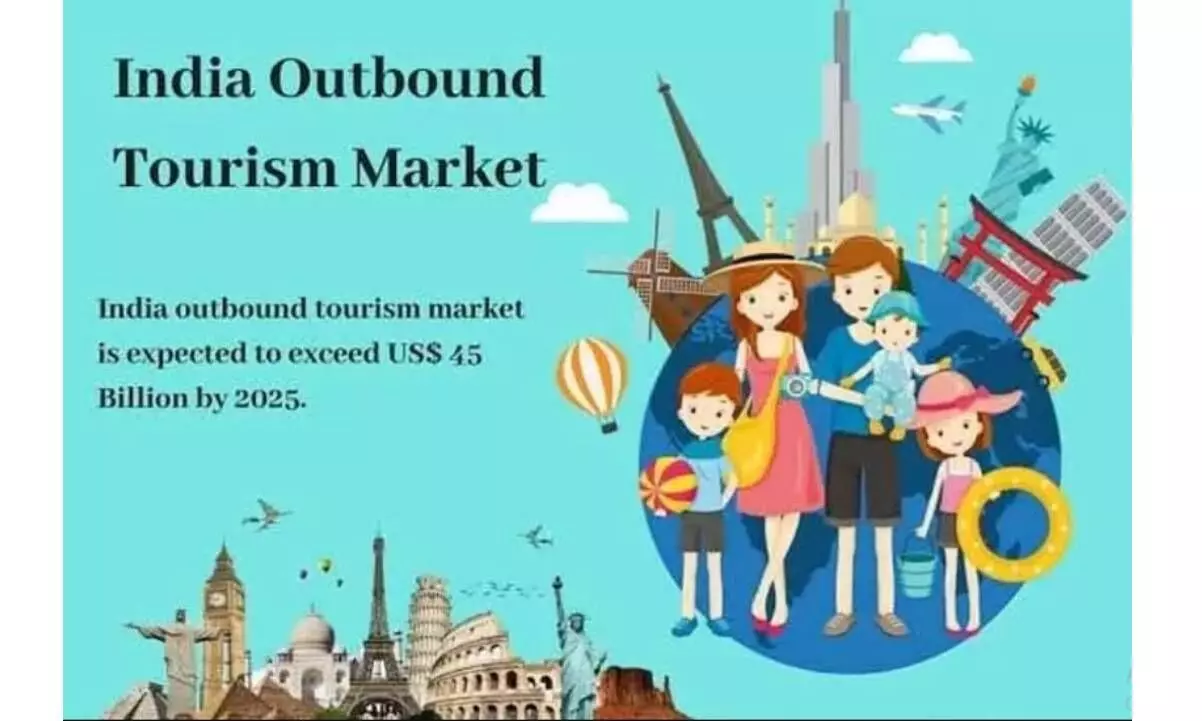India to have over 50 million annual outbound travellers by FY2030
The country’s carriers have strong balance sheets and a strategic determination to build world-class airlines
image for illustrative purpose

The number of international outbound departures by Indian residents is expected to grow from 17.4 million in 2019 to over 50 million in 2030 making it the world’s fastest-growing outbound market and also one of the most attractive source markets for global destinations, according to CAPA India.
Manvi Hooda, Practice Lead, CAPA India, points out that “the country’s overall bidirectional international passenger traffic is expected to reach 140–160 million by then. The key feature of the outbound market going forward is that it will be the increasing share of discretionary leisure travel, which, over time, is likely to become the leading driver of traffic, accounting for more than 28 million international departures”.
As outbound leisure travel grows from 8.3 million to over 28.0 million trips during this period, expenditure on holidays (air and ground combined) is forecast to increase from $16-18 billion to $65-75 billion. By 2030, air travel will account for just over 20% of leisure spend.
Destinations with the largest number of Indian leisure visitors – Dubai, Thailand, Singapore and Malaysia – are short-haul markets. However, the aspirational destinations are mostly long-haul. When asked which destinations they would most like to visit, respondents identified the US, the UK, Australia, Italy and New Zealand. Some of the destinations of emerging interest include Azerbaijan, Croatia, Egypt, Japan, Kenya and Vietnam.
Indian travellers are increasingly interested in longer duration holidays. In 2018, only 45% said that their average vacation trip was more than 4 days; however, this has increased to 86%, with 5–7 days being the most common.
Younger travellers are looking for greater engagement during their travel, with more event, activity and adventure-based itineraries, as opposed to relaxing and unwinding.
All segments consider food and drink to be an important consideration on a holiday. Gen Z and millennial travellers are more open to exploring new cuisines, but there is a preference for Indian or familiar food across all segments. Nevertheless, the increased availability of Indian and vegetarian options in many key destinations has resulted in greater ease of travel.
While word of mouth remains arguably the key influence on choice of destination, social media and movies/TV shows play an extremely significant role.
Demand for international travel is expected to surge because of a structural transformation of the key economic and consumption drivers.
In fact, the projected increase in the prosperity of higher income households will significantly outpace the national average, providing a further impetus to discretionary income available for travel.
He pointed out, “In addition to rising incomes, other key drivers will include increasing air capacity with more nonstop connectivity, liberalised visa requirements, a greater investment in marketing to Indian travellers by foreign tourist boards, and the growing influence of media and social media on the aspirations of Indian consumers, especially younger demographics.
However, going forward, CAPA India believes the airline industry is much stronger and the economy much larger. Indian carriers have strong balance sheets and a strategic determination to build world-class airlines. As they progressively take delivery of aircraft from their massive, combined order of around 1,500 aircraft, Indian carriers are expected to deploy an additional 325–350 aircraft on international routes over the next 5–7 years. Indian consumers will, for the first time, have a choice between world-class Indian FSCs, LCCs and leading global carriers.
Other factors that will contribute to the growth of international demand include strong economic growth (with GDP expected to double in the next 6–7 years); the development of airport capacity ahead of demand, for the very first time; a focus on hub development by airlines as well as airports; and an expected opening up of bilaterals from FY2025, perhaps modestly and gradually to begin with. Double-digit growth cannot be taken for granted – and there will be several risks, not least of which includes supply chain issues in the short-term – but the conditions are as favourable as they have ever been in the Indian aviation sector.
International outbound leisure travel from India has tremendous potential but it still needs to be converted and that too at sustainable yields. This will require a strong understanding of the consumer, including demographics and psychographics, supported by continuous investment in researching traveller behaviour and preferences, distribution, point of sale, pricing and marketing effectiveness to enable data-driven decision-making.
Airports will similarly have to adapt their retail, duty-free and F&B formats to align with the rapid evolution of the customer.

